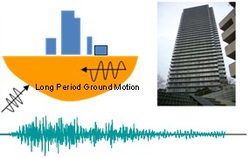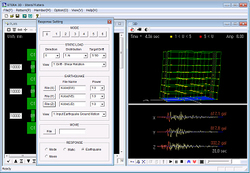
Saito, Taiki
| Affiliation | Department of Architecture and Civil Engineering |
|---|---|
| Concurrent post | Research Center for Collaborative Area Risk Management (CARM) |
| Title | Professor |
| Fields of Research | Structural Engineering / Earthquake Engineering |
| Degree | PhD in Engineering (Tohoku University) |
| Academic Societies | Architectural Institute of Japan / Japan Society of Earthquake Engineering / Japan Society of Seismic Isolation |
| tsaito@ace Please append ".tut.ac.jp" to the end of the address above. |
|
| Laboratory website URL | http://www.rc.ace.tut.ac.jp/saito/index.html |
| Researcher information URL(researchmap) | Researcher information |
Research
Everyone should have the anxiety about the safety of the city and the building where he lives under earthquake and tsunami. In order to achieve disaster risk reduction and reduce the anxiety, researchers and engineers must send correct information and knowledge to society about the safety.
Earthquake Disaster Engineering Research Laboratory will conduct research and development in earthquake disaster mitigation for cities and buildings and disseminate the knowledge to society. In addition, we will promote international cooperation to contribute disaster mitigation research not only in Japan but around the world.
Theme1:Seismic safety of high-rise buildings against long period ground motions
Overview
Nankai Trough Earthquake with magnitude 9 likely to occur by the middle of the 21st century. It could lead to serious damage to important structures in urban cities. In particular, the structures with long natural period such as base isolation buildings, high-rise buildings, long-span bridges and oil tanks have the property of resonance by long-period ground motions.
Therefore, this research aims to develop the technology to improve seismic performance of high-rise buildings against long-period ground motions.
Keywords
Theme2:Experiment and analysis of earthquake and tsunami safety of buildings
Overview
There is a need to improve earthquake resistance of buildings to prepare for the future Nankai Trough Earthquake with magnitude 9.
This research conducts monitoring and strong motion observation of buildings to clarify the actual phenomena. Also based on precise seismic response analysis method, safety and function of buildings to the massive earthquake and tsunami are quantified.
Keywords
Theme3:Promotion of international cooperation for earthquake disaster mitigation
Overview
Earthquake disaster mitigation is a global challenge. Japan must take the leadership and work together with other countries. We will promote technical cooperation and organize international conferences for this purpose.



